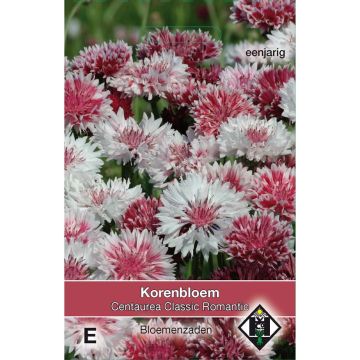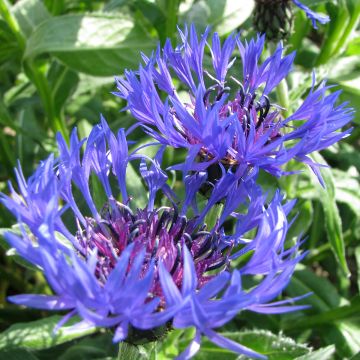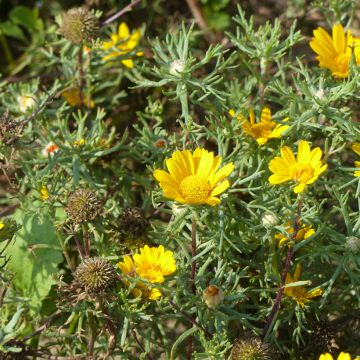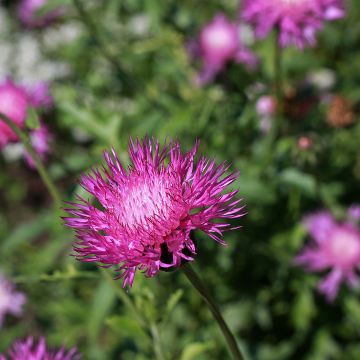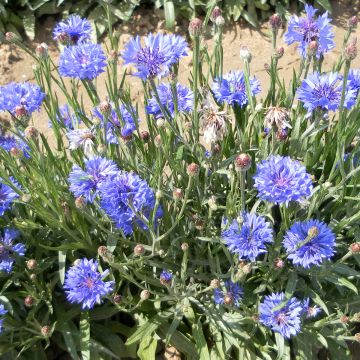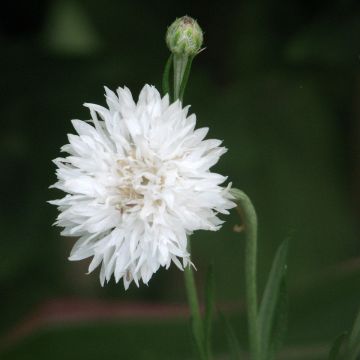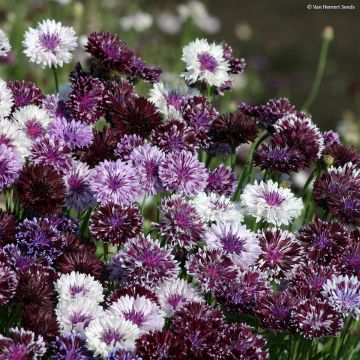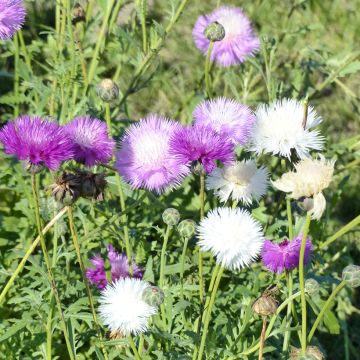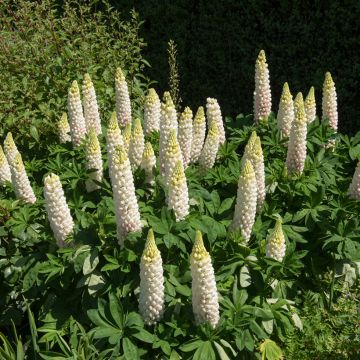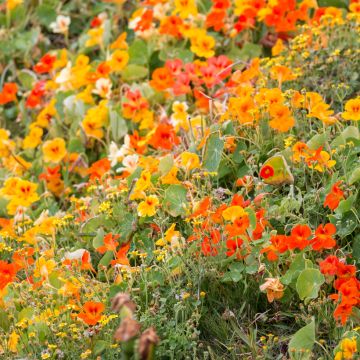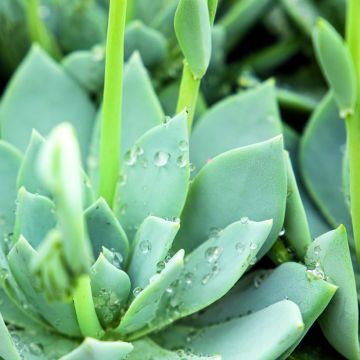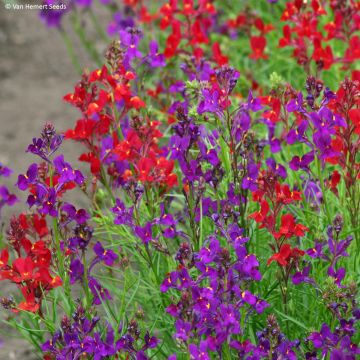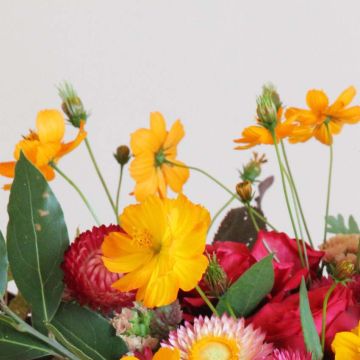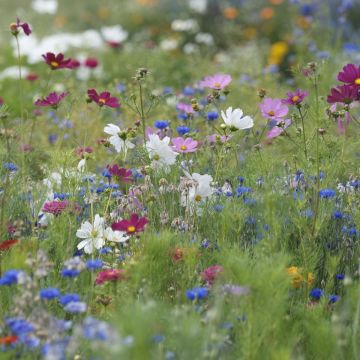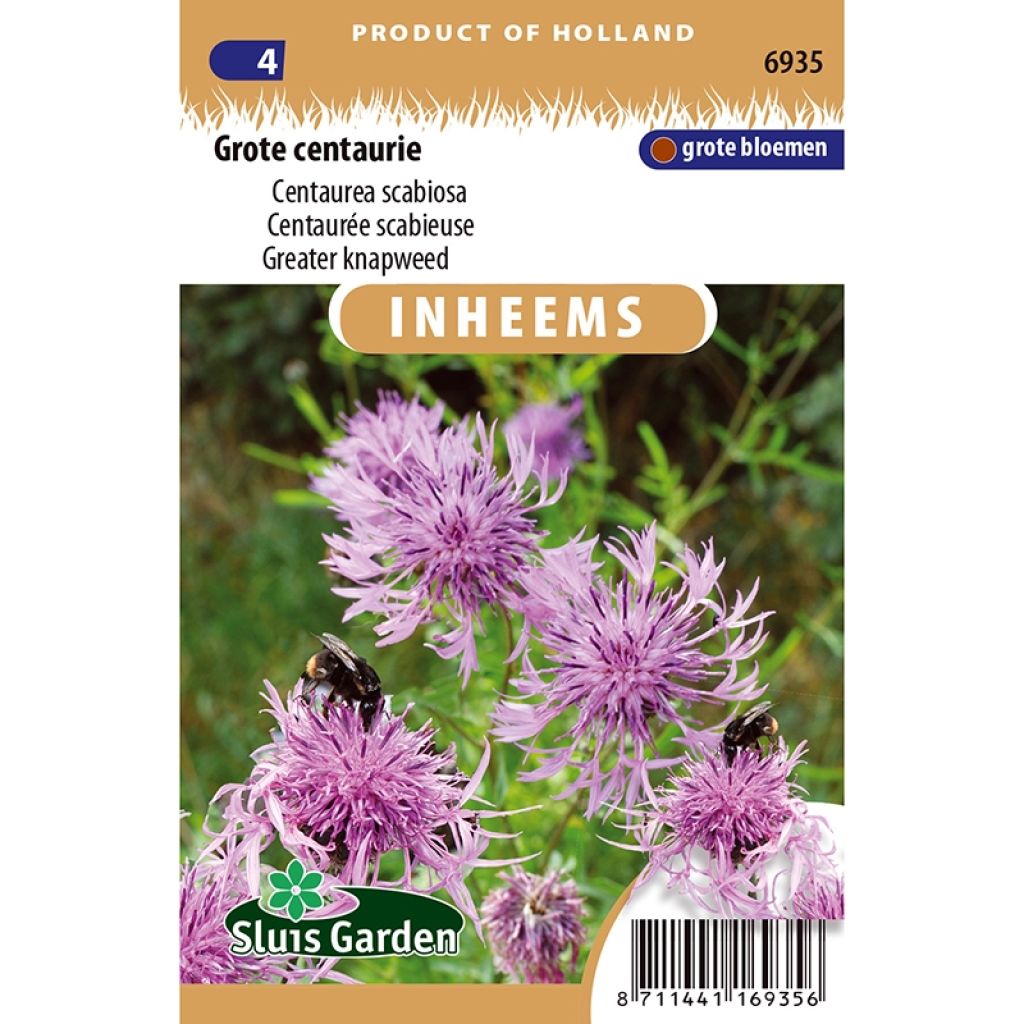

Graines de Centaurée scabieuse - Centaurea scabiosa
Centaurea scabiosa
Centaurea scabiosa
Greater Knapweed, Black Top
This item cannot be shipped to the selected country
Dispatch by letter from €3.90
More information
Schedule delivery date,
and select date in basket
This plant carries a 6 months recovery warranty
More information
We guarantee the quality of our plants for a full growing cycle, and will replace at our expense any plant that fails to recover under normal climatic and planting conditions.
Seed-only orders are dispatched by sealed envelope. The delivery charge for seed-only orders is €3.90.
Does this plant fit my garden?
Set up your Plantfit profile →
Description
Centaurea scabiosa is a beautiful wild flower that is found in almost all of Europe, mainly on limestone and dry soils. It is a very easy-to-grow perennial plant that forms a beautiful clump of sturdy upright stems with deeply divided leaves. It is adorned in summer with large purplish flowers, visited by bees and butterflies. It can be sown in April-May or October-November, directly in well-prepared soil.
Centaurea scabiosa is known by different common names depending on the region for example blacktop. It is a perennial herbaceous plant in the Asteraceae family, just like cornflower. Depending on the soil fertility, this Centaurea can reach between 30 cm (12in) and 1.20 m (4ft) in height, averaging 70-75 cm (28-30in). It is composed of branching stems. The leaves are generally deeply divided up to the middle into oval or lanceolate segments. Only the leaves at the base of the stems have a petiole. Flowering takes place from June to August and lasts about two months. At the end of the branches, flowers organised in heads measuring between 3 and 5 cm (1 and 2in) in diameter appear. Each head is composed of numerous ligulate tubular flowers, with a colour that is a mix of purplish pink and purplish violet. This flowering is very attractive to bees and butterflies. After pollination, fruits form. These are cocoa-pod-shaped achenes measuring 3 to 5 mm (0.2in) that bear double egret-like appendages. The wind will disperse them, allowing the plant to self-seed in the surrounding area.
Centaurea scabiosa enchants flower beds and borders, where they create remarkable patches of colour. They bring the charm of the countryside to our gardens and promote biodiversity, without requiring much maintenance. Sow them in rustic beds, in meadows or in a dedicated strip for wildflowers. This Centaurea scabiosa will look sublime in combination with ornamental grasses like Stipa tenuifolia or Mulhenbergia capillaris, catmints, and with nigellas.
Report an error about the product description
Flowering
Foliage
Plant habit
Botanical data
Centaurea
scabiosa
Asteraceae
Greater Knapweed, Black Top
Western Europe
Other Centaurea seeds
Planting and care
Sow the seeds of Centaurea scabiosa outdoors, in April-May or October. Choose a sunny location on well-drained, properly prepared and loosened soil. Sow the seeds finely, at a depth of 3 mm (0.2in). Water regularly, especially during dry periods. Germination usually takes about 21 days. Thin out the seedlings to keep only one plant every 50 cm (20in).
Centaurea scabiosa is grown in full sun. This species prefers slightly dry, calcareous and clay soils. Soils that are both very clay and wet are not suitable for it. Overly acidic soils should be avoided. Once well rooted, it requires no watering or maintenance. It can self-seed if the conditions are suitable.
Sowing period
Intended location
This item has not been reviewed yet - be the first to leave a review about it.
Flower seeds
Haven't found what you were looking for?
Hardiness is the lowest winter temperature a plant can endure without suffering serious damage or even dying. However, hardiness is affected by location (a sheltered area, such as a patio), protection (winter cover) and soil type (hardiness is improved by well-drained soil).

Photo Sharing Terms & Conditions
In order to encourage gardeners to interact and share their experiences, Promesse de fleurs offers various media enabling content to be uploaded onto its Site - in particular via the ‘Photo sharing’ module.
The User agrees to refrain from:
- Posting any content that is illegal, prejudicial, insulting, racist, inciteful to hatred, revisionist, contrary to public decency, that infringes on privacy or on the privacy rights of third parties, in particular the publicity rights of persons and goods, intellectual property rights, or the right to privacy.
- Submitting content on behalf of a third party;
- Impersonate the identity of a third party and/or publish any personal information about a third party;
In general, the User undertakes to refrain from any unethical behaviour.
All Content (in particular text, comments, files, images, photos, videos, creative works, etc.), which may be subject to property or intellectual property rights, image or other private rights, shall remain the property of the User, subject to the limited rights granted by the terms of the licence granted by Promesse de fleurs as stated below. Users are at liberty to publish or not to publish such Content on the Site, notably via the ‘Photo Sharing’ facility, and accept that this Content shall be made public and freely accessible, notably on the Internet.
Users further acknowledge, undertake to have ,and guarantee that they hold all necessary rights and permissions to publish such material on the Site, in particular with regard to the legislation in force pertaining to any privacy, property, intellectual property, image, or contractual rights, or rights of any other nature. By publishing such Content on the Site, Users acknowledge accepting full liability as publishers of the Content within the meaning of the law, and grant Promesse de fleurs, free of charge, an inclusive, worldwide licence for the said Content for the entire duration of its publication, including all reproduction, representation, up/downloading, displaying, performing, transmission, and storage rights.
Users also grant permission for their name to be linked to the Content and accept that this link may not always be made available.
By engaging in posting material, Users consent to their Content becoming automatically accessible on the Internet, in particular on other sites and/or blogs and/or web pages of the Promesse de fleurs site, including in particular social pages and the Promesse de fleurs catalogue.
Users may secure the removal of entrusted content free of charge by issuing a simple request via our contact form.
The flowering period indicated on our website applies to countries and regions located in USDA zone 8 (France, the United Kingdom, Ireland, the Netherlands, etc.)
It will vary according to where you live:
- In zones 9 to 10 (Italy, Spain, Greece, etc.), flowering will occur about 2 to 4 weeks earlier.
- In zones 6 to 7 (Germany, Poland, Slovenia, and lower mountainous regions), flowering will be delayed by 2 to 3 weeks.
- In zone 5 (Central Europe, Scandinavia), blooming will be delayed by 3 to 5 weeks.
In temperate climates, pruning of spring-flowering shrubs (forsythia, spireas, etc.) should be done just after flowering.
Pruning of summer-flowering shrubs (Indian Lilac, Perovskia, etc.) can be done in winter or spring.
In cold regions as well as with frost-sensitive plants, avoid pruning too early when severe frosts may still occur.
The planting period indicated on our website applies to countries and regions located in USDA zone 8 (France, United Kingdom, Ireland, Netherlands).
It will vary according to where you live:
- In Mediterranean zones (Marseille, Madrid, Milan, etc.), autumn and winter are the best planting periods.
- In continental zones (Strasbourg, Munich, Vienna, etc.), delay planting by 2 to 3 weeks in spring and bring it forward by 2 to 4 weeks in autumn.
- In mountainous regions (the Alps, Pyrenees, Carpathians, etc.), it is best to plant in late spring (May-June) or late summer (August-September).
The harvesting period indicated on our website applies to countries and regions in USDA zone 8 (France, England, Ireland, the Netherlands).
In colder areas (Scandinavia, Poland, Austria...) fruit and vegetable harvests are likely to be delayed by 3-4 weeks.
In warmer areas (Italy, Spain, Greece, etc.), harvesting will probably take place earlier, depending on weather conditions.
The sowing periods indicated on our website apply to countries and regions within USDA Zone 8 (France, UK, Ireland, Netherlands).
In colder areas (Scandinavia, Poland, Austria...), delay any outdoor sowing by 3-4 weeks, or sow under glass.
In warmer climes (Italy, Spain, Greece, etc.), bring outdoor sowing forward by a few weeks.

































